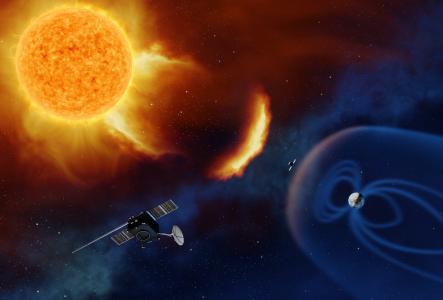Feasibility of using platform magnetometers to observe and detect space weather events

Magnetometers are fundamental instruments used in planetary and space science. They are able to measure magnetic fields originating in a planet’s interior, past fields encapsulated in rocks in the crust, as well as magnetic fields generated by the motion of charged particles in the plasma environments of ionospheres, magnetospheres and interplanetary space.
Currents in space plasma transfer energy over very large distances. The state of the Earth’s magnetosphere is to a large extent dependent on the orientation and strength of the interplanetary magnetic field (IMF) just upstream. A southward orientation of the IMF enables magnetic reconnection between the IMF and magnetosphere, triggering geomagnetic storms and substorms. This is why IMF measurements in the Sun-Earth L1 point are essential for space weather modeling and prediction. In the case of the plasma within Earth’s magnetosphere, currents are able to deposit significant energy in Earth’s upper atmosphere, causing ionisation, heating and expansion of the neutral upper atmosphere, which in turn interacts with the charged particle environment in a complex, highly non-linear way. These processes induce variability in the level of atmospheric drag on satellites, as well as perturbations of radio communications, navigation signals and scientific observations relying on radio links.
Currents in the ionosphere can also induce currents inside Earth, affecting and possibly endangering human-made infrastructure, such as power lines and pipes. For these reasons, magnetometer measurements of ionospheric currents are essential observations in the field of space weather. Due to the geometry and high altitude of magnetospheric and ionospheric current systems, satellite measurements are needed in addition to ground magnetic observatories, in order to reveal their detailed behaviour. Due to the large spatial extent of the currents, the variety of spatial scales of variability, as well as the sometimes very rapid fluctuations, adding simultaneous observations from many satellites will be extremely useful to enhance our understanding of space weather, and to be prepared to adjust our response to space weather in more sophisticated ways than is currently possible.
This is where the use of platform magnetometers comes in. On satellites in low-Earth orbit (LEO), magnetometers are often used as part of the attitude control subsystem. Although these instruments are not designed and implemented for space weather observation, they can nevertheless be used for this purpose.
